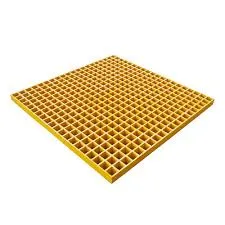
-
 Afrikaans
Afrikaans -
 Albanian
Albanian -
 Amharic
Amharic -
 Arabic
Arabic -
 Armenian
Armenian -
 Azerbaijani
Azerbaijani -
 Basque
Basque -
 Belarusian
Belarusian -
 Bengali
Bengali -
 Bosnian
Bosnian -
 Bulgarian
Bulgarian -
 Catalan
Catalan -
 Cebuano
Cebuano -
 China
China -
 China (Taiwan)
China (Taiwan) -
 Corsican
Corsican -
 Croatian
Croatian -
 Czech
Czech -
 Danish
Danish -
 Dutch
Dutch -
 English
English -
 Esperanto
Esperanto -
 Estonian
Estonian -
 Finnish
Finnish -
 French
French -
 Frisian
Frisian -
 Galician
Galician -
 Georgian
Georgian -
 German
German -
 Greek
Greek -
 Gujarati
Gujarati -
 Haitian Creole
Haitian Creole -
 hausa
hausa -
 hawaiian
hawaiian -
 Hebrew
Hebrew -
 Hindi
Hindi -
 Miao
Miao -
 Hungarian
Hungarian -
 Icelandic
Icelandic -
 igbo
igbo -
 Indonesian
Indonesian -
 irish
irish -
 Italian
Italian -
 Japanese
Japanese -
 Javanese
Javanese -
 Kannada
Kannada -
 kazakh
kazakh -
 Khmer
Khmer -
 Rwandese
Rwandese -
 Korean
Korean -
 Kurdish
Kurdish -
 Kyrgyz
Kyrgyz -
 Lao
Lao -
 Latin
Latin -
 Latvian
Latvian -
 Lithuanian
Lithuanian -
 Luxembourgish
Luxembourgish -
 Macedonian
Macedonian -
 Malgashi
Malgashi -
 Malay
Malay -
 Malayalam
Malayalam -
 Maltese
Maltese -
 Maori
Maori -
 Marathi
Marathi -
 Mongolian
Mongolian -
 Myanmar
Myanmar -
 Nepali
Nepali -
 Norwegian
Norwegian -
 Norwegian
Norwegian -
 Occitan
Occitan -
 Pashto
Pashto -
 Persian
Persian -
 Polish
Polish -
 Portuguese
Portuguese -
 Punjabi
Punjabi -
 Romanian
Romanian -
 Russian
Russian -
 Samoan
Samoan -
 Scottish Gaelic
Scottish Gaelic -
 Serbian
Serbian -
 Sesotho
Sesotho -
 Shona
Shona -
 Sindhi
Sindhi -
 Sinhala
Sinhala -
 Slovak
Slovak -
 Slovenian
Slovenian -
 Somali
Somali -
 Spanish
Spanish -
 Sundanese
Sundanese -
 Swahili
Swahili -
 Swedish
Swedish -
 Tagalog
Tagalog -
 Tajik
Tajik -
 Tamil
Tamil -
 Tatar
Tatar -
 Telugu
Telugu -
 Thai
Thai -
 Turkish
Turkish -
 Turkmen
Turkmen -
 Ukrainian
Ukrainian -
 Urdu
Urdu -
 Uighur
Uighur -
 Uzbek
Uzbek -
 Vietnamese
Vietnamese -
 Welsh
Welsh -
 Bantu
Bantu -
 Yiddish
Yiddish -
 Yoruba
Yoruba -
 Zulu
Zulu
extension of a threaded rod how to properly extend a ...
How to Properly Extend a Threaded Rod A Comprehensive Guide
Threaded rods are versatile fasteners used in various applications, from construction to machinery. Extending a threaded rod can be necessary for accommodating specific needs, whether it's for joining two pieces of material or increasing the length of a connection point. Properly extending a threaded rod ensures that the integrity and functionality of the assembly are maintained. This article outlines the steps and considerations necessary for extending a threaded rod effectively.
Understanding Threaded Rods
Before diving into the extension process, it is essential to understand what a threaded rod is. Typically made from steel or stainless steel, threaded rods are a long, cylindrical piece of metal with continuous threading along its length. They can be used in conjunction with nuts or other fasteners to create strong mechanical connections. When extending a threaded rod, you are essentially creating a longer version of this component while ensuring that it remains structurally sound.
Materials Needed
1. Threaded Rods The original rod and the new piece to be added. 2. Coupling Nuts These will be used to connect the original rod and the extension securely. 3. Wrenches For tightening the nuts. 4. Thread Lock Adhesive This can be used to ensure that the rods remain tightly connected over time. 5. Cutting Tool (if necessary) To achieve the desired length of the threaded rod.
Step-by-Step Instructions
1. Determine the Length Needed Measure the length required for your application. It is important to be precise, as too short an extension could compromise the functionality of the assembly.
2. Select the Right Extension Material Choose a threaded rod material that matches or exceeds the specifications of your original rod. This ensures compatibility and strength.
extension of a threaded rod how to properly extend a ...

3. Cut the New Rod (if necessary) If the new threaded rod is longer than required, use a cutting tool to achieve the desired length. Ensure that the cut is clean to allow for easier threading with the coupling nut.
4. Prepare the Threaded Ends Check the ends of both the original and new rods. If there are any burrs or rough edges from cutting, smooth them out using a file. This will help ensure a tighter fit when they are connected.
5. Apply Thread Lock Adhesive (optional) For added security, apply a small amount of thread lock adhesive to the threads of the rods. This helps prevent them from loosening due to vibrations or movement.
6. Connect the Rods with Coupling Nuts Screw a coupling nut onto the end of the original threaded rod. Ensure it is entirely threaded on. Then insert the new threaded rod into the other end of the coupling nut and tighten securely using a wrench.
7. Tighten the Connection Using an appropriate wrench, tighten the coupling nuts on both ends of the extended rod. Be cautious not to overtighten, as this could strip the threads or weaken the assembly.
8. Final Inspection After completing the extension, inspect the assembly to ensure that everything is secure. Verify that the extended threaded rod is straight and that all connections are tight.
Conclusion
Properly extending a threaded rod is a task that requires attention to detail and adherence to best practices. By following the outlined steps and taking the necessary precautions, you can successfully create a longer, functional threaded rod that meets your application needs. Whether you're working on construction projects or mechanical assemblies, understanding and executing this process correctly will enhance the durability and effectiveness of your creations. Always prioritize safety and precision to ensure the best results in your threaded rod extensions.









